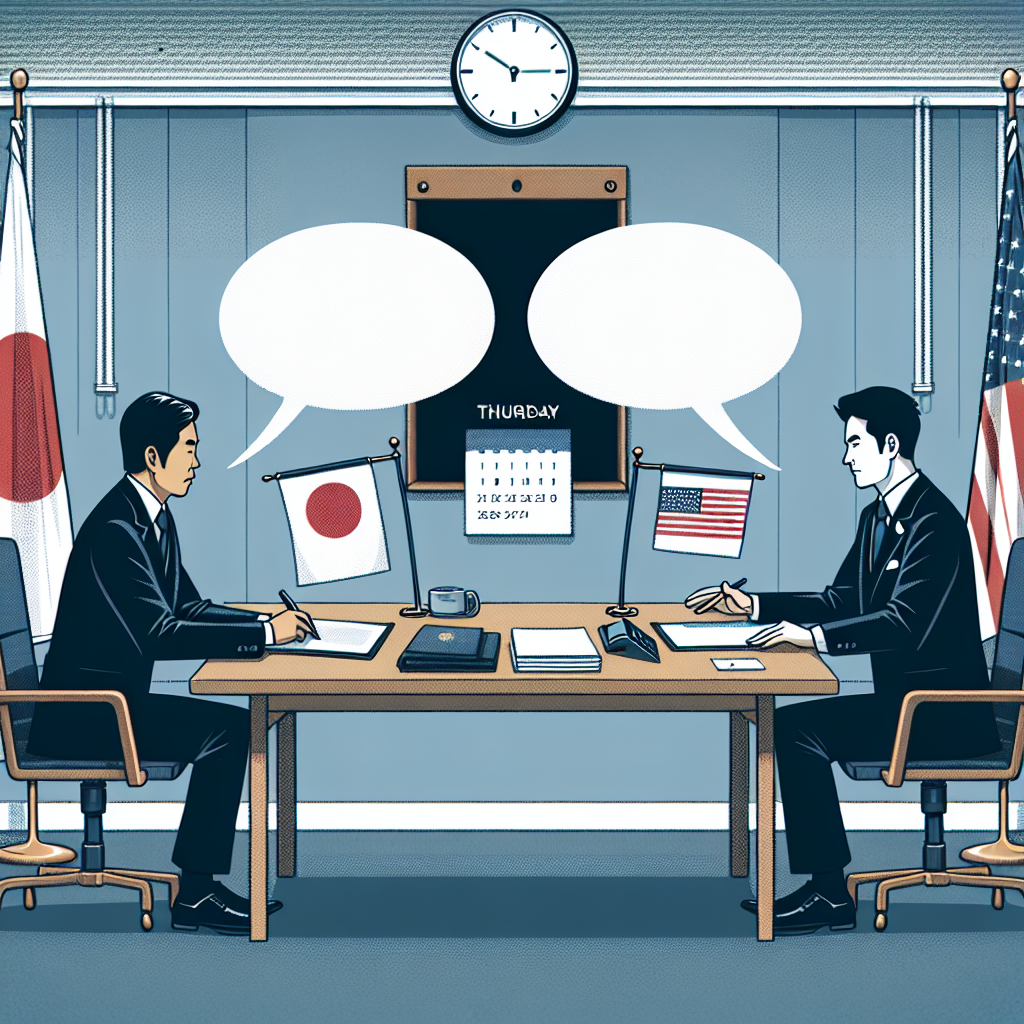On Thursday, May 1st, Japan and the United States initiated the second round of tariff and trade negotiations in Washington. Japan’s chief negotiator, Ryo Akazawa, stated that both sides have agreed to intensify ministerial-level consultations starting from mid-May, and noted that this round of talks has “made progress,” paving the way for an early conclusion of a mutually beneficial agreement.
This marks Akazawa’s second high-level meeting with U.S. Treasury Secretary Scott Bessent, Trade Representative Jamieson Greer, and Commerce Secretary Howard Lutnick. The discussions were characterized as frank and open, covering key issues such as non-tariff barriers, expanding bilateral trade cooperation, and enhancing the economic security framework.
In his post-meeting briefing, Akazawa reiterated Japan’s regret over President Trump’s comprehensive tariff policies, and once again requested Washington to reconsider recent tariff measures, especially those affecting the automotive industry.
“We have agreed to schedule the date for the next round of high-level meetings with the aim of accelerating the negotiation process starting from mid-May,” Akazawa said.
He added that the meeting lasted over two hours, during which defense spending or exchange rate-related matters were not discussed.
In early April, the Trump administration imposed a 24% “equivalent tariff” on Japanese goods, temporarily postponed until early July to facilitate negotiations. However, Japanese goods still face a 10% standard tariff, along with the impact of new tariffs on automobiles and other sectors.
As Japan’s Minister of Economic Revitalization, Akazawa led the negotiations, once again urging the U.S. to relieve tariff pressures on automobiles and key industries.
Despite Trump recently easing some automotive tax burdens, allowing car manufacturers producing in the U.S. to apply for tax refunds, Japan still urges the complete elimination of tariffs on automobiles and other items. The automotive industry, as a core of Japan’s export economy, is particularly impacted by these measures.
To facilitate mutually beneficial negotiations, Akazawa has proposed a series of measures to the U.S. These include increasing imports of corn and soybeans from the U.S. and considering expanding the tax-free import quota for U.S. rice to assist America in coping with declining agricultural exports amid U.S.-China trade tensions.
Currently, the U.S. is Japan’s largest source of soybeans and corn.
Additionally, Japan may streamline safety and environmental inspection processes for American-made cars in response to President Trump’s long-standing criticisms of Japan’s “non-tariff barriers.”
President Trump has persistently criticized Japan for hindering American car sales through “non-tariff barriers,” including safety and environmental inspection standards, limited urban parking spaces, and what he termed the “bowling ball test” – referring to Japan’s requirement for vehicles to pass rigorous safety standards based on simulated impact testing.
Sources revealed that Japan is also considering supporting the U.S. shipbuilding industry as part of the negotiation tactics. The Trump administration has stated that with China’s increasing dominance in the shipbuilding industry, revitalizing American shipbuilding capabilities is urgent.
These proposals aim to demonstrate Japan’s willingness to cooperate with America’s economic strategies while seeking to reduce tariff pressures.
According to Reuters, Japan’s Finance Minister Taro Kato stated that Japan holds over $1 trillion in U.S. Treasury bonds, which can be used as a tool in U.S. trade negotiations, but emphasized that “whether it will actually be used is another matter.”
In a TV interview, Kato said, “This is indeed a card to play. Whether to play this card is another level of decision-making.”
In response to Trump’s accusations of Japan manipulating exchange rates and deliberately depreciating the yen to promote exports, Kato countered, “Japan does not manipulate exchange rates. We need to thoroughly explain this to the U.S.”
Ryo Akazawa stated that Japan and the U.S. have agreed to arrange the next high-level meeting, aiming to expedite the negotiation progress from mid-May. He noted that while many issues are yet to be finalized, the atmosphere of the meeting was frank and open, with both sides hoping to reach a consensus on mutual beneficial solutions as soon as possible.
When asked if the U.S. and Japan could reach an agreement by June, Akazawa responded, “If we can reach that stage, it would be great.”
Among America’s major trading partners, the U.S. has prioritized India, Japan, and South Korea as key negotiation partners, viewing these three countries as crucial in countering China’s influence in the Indo-Pacific region.

